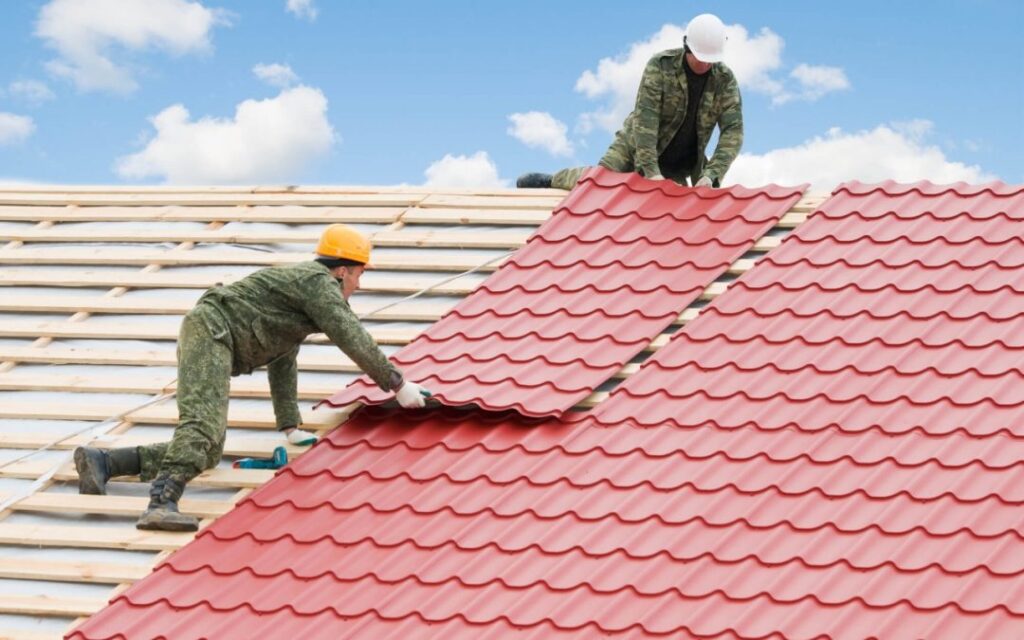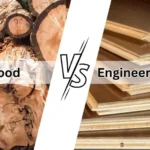The roof is one of the most critical components of any building, providing essential protection against the elements and contributing significantly to the overall aesthetic and structural integrity of a home. Whether you’re building a new home, renovating an existing one, or simply in need of repairs, understanding the various aspects of roofing is crucial. This comprehensive guide covers the different types of roofs, materials available, and essential maintenance tips to keep your roof in top condition.
Types of Roofs
1. Gable Roof
Description: The gable roof is characterized by its triangular shape, with two sloping sides that meet at the top ridge.
Advantages:
- Simple design makes it easy and cost-effective to build.
- Excellent for shedding water and snow.
- Provides ample attic space for storage or living areas.
Disadvantages:
- Can be vulnerable to wind damage if not properly braced.
2. Hip Roof
Description: A hip roof has slopes on all four sides, which are all equal length and come together at the top to form a ridge.
Advantages:
- More stable and durable than gable roofs in high-wind areas.
- Offers better ventilation and living space options.
Disadvantages:
- More complex design can make it more expensive to build and repair.
3. Flat Roof
Description: Flat roofs are horizontal or nearly horizontal with a slight pitch for drainage.
Advantages:
- Easier and safer to construct and maintain.
- Provides extra living space (e.g., rooftop gardens, decks).
Disadvantages:
- Poor drainage can lead to water pooling and leaks.
- Typically require more maintenance.
4. Mansard Roof
Description: A mansard roof has four sides, with each side having two slopes. The lower slope is steeper than the upper slope.
Advantages:
- Maximizes attic space and can create additional living space.
- Aesthetically pleasing and offers a distinctive architectural style.
Disadvantages:
- More expensive to build and repair due to the complexity of the design.
- Not suitable for regions with heavy snowfall.
5. Gambrel Roof
Description: Similar to a mansard roof but with two sides. Each side has two slopes, with the lower slope being steeper.
Advantages:
- Provides excellent attic or storage space.
- Easier to construct than a mansard roof.
Disadvantages:
- Not ideal for areas with heavy wind or snowfall.
Roofing Materials
1. Asphalt Shingles
Description: Asphalt shingles are the most common roofing material in North America.
Advantages:
- Affordable and widely available.
- Easy to install and replace.
- Available in a variety of colors and styles.
Disadvantages:
- Shorter lifespan compared to other materials (20-30 years).
- Susceptible to wind and hail damage.
2. Metal Roofing
Description: Metal roofs are made from materials like aluminum, steel, copper, or zinc.
Advantages:
- Long-lasting (up to 50 years or more).
- Highly durable and resistant to extreme weather conditions.
- Energy-efficient as they reflect solar radiant heat.
Disadvantages:
- Higher initial cost.
- Requires professional installation.
3. Clay and Concrete Tiles
Description: These tiles are known for their durability and distinctive appearance.
Advantages:
- Long lifespan (50-100 years).
- Fire-resistant and environmentally friendly.
- Excellent for Mediterranean, Spanish, or Southwestern-style homes.
Disadvantages:
- Heavy, requiring additional structural support.
- Expensive and can be fragile if walked on.
4. Slate
Description: Slate is a natural stone that offers a high-end, elegant appearance.
Advantages:
- Extremely durable and can last over a century.
- Fire-resistant and environmentally friendly.
Disadvantages:
- Very expensive.
- Heavy, necessitating additional structural support.
5. Wood Shingles and Shakes
Description: Made from cedar, redwood, or pine, wood shingles are machine-cut, while shakes are hand-split.
Advantages:
- Natural and rustic appearance.
- Good insulation properties.
Disadvantages:
- Requires regular maintenance to prevent rot and insect damage.
- Not fire-resistant unless treated.
Essential Roofing Maintenance Tips
1. Regular Inspections
Conduct bi-annual roof inspections, preferably in spring and fall, to identify and address potential issues early. Look for signs of damage, such as missing or broken shingles, rusted flashing, or moss growth.
2. Clean Gutters and Downspouts
Ensure gutters and downspouts are free of debris to prevent water backup, which can cause leaks and water damage. Clean them at least twice a year or more frequently if you have overhanging trees.
3. Trim Overhanging Branches
Trim branches that overhang your roof to prevent damage from falling limbs and to reduce the accumulation of debris and leaves.
4. Check for Leaks
Regularly inspect your attic for signs of leaks, such as water stains, mold, or damp insulation. Address any leaks immediately to prevent further damage.
5. Address Moss and Algae
Moss and algae can damage roofing materials and reduce their lifespan. Use a mixture of water and bleach to remove moss and algae, or install zinc or copper strips to prevent their growth.
6. Repair Damage Promptly
Fix any damage to your roof as soon as possible to prevent small issues from becoming major problems. This includes replacing missing shingles, sealing cracks, and repairing flashing.
7. Ensure Proper Ventilation
Proper attic ventilation helps regulate temperature and moisture levels, preventing damage to your roof and extending its lifespan.
Conclusion
Your roof is a crucial component of your home, providing protection, enhancing aesthetics, and ensuring structural integrity. Understanding the different types of roofs and materials, as well as implementing regular maintenance practices, can help you make informed decisions and keep your roof in excellent condition for years to come. Whether you opt for the affordability of asphalt shingles, the durability of metal, or the elegance of slate, investing in quality roofing and maintenance will pay off in the long run, safeguarding your home and peace of mind.






